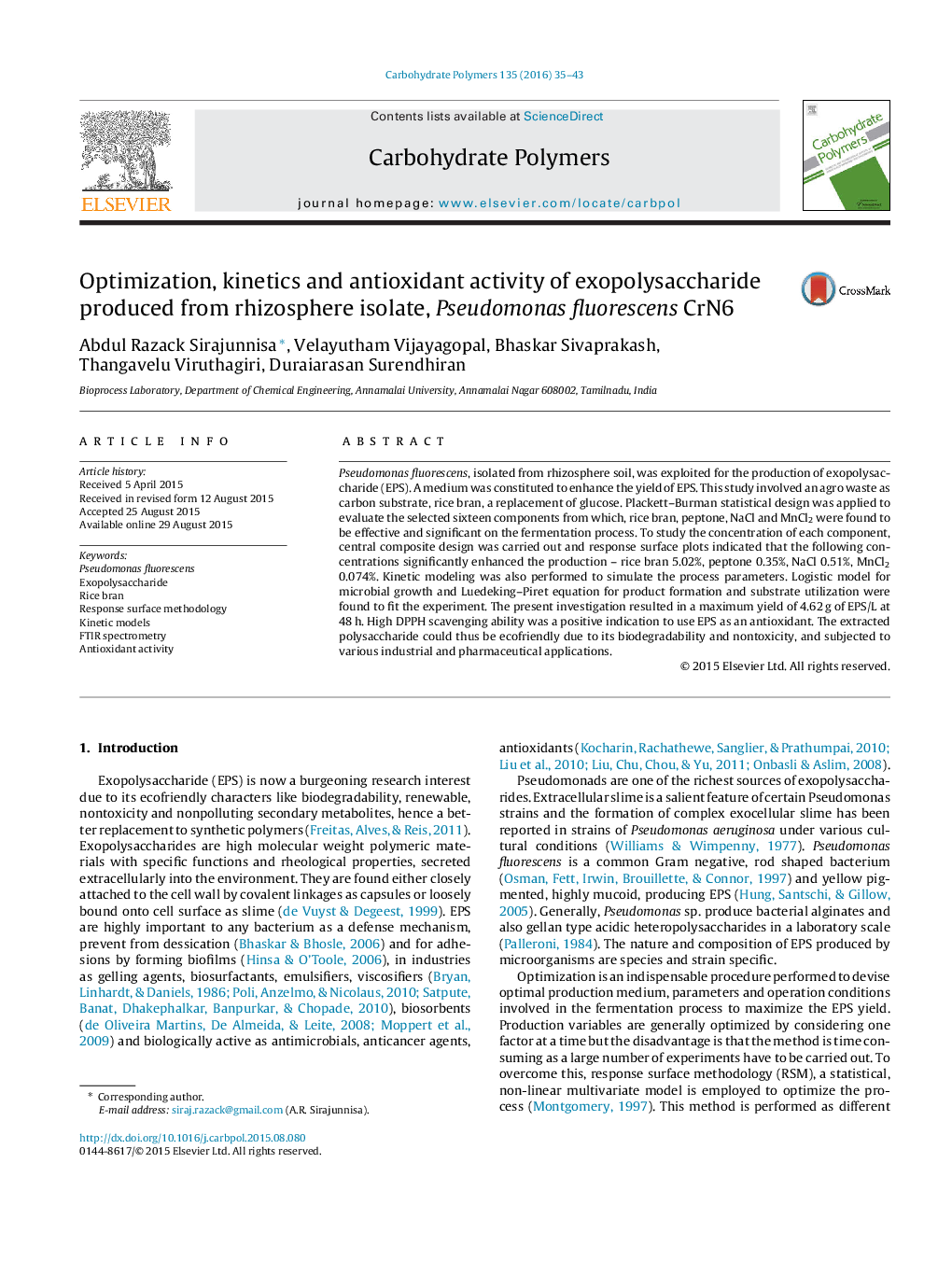| Article ID | Journal | Published Year | Pages | File Type |
|---|---|---|---|---|
| 1383541 | Carbohydrate Polymers | 2016 | 9 Pages |
•EPS producing P. fluorescens strain was isolated from soil and successfully identified by gene sequence.•Plackett–Burman design was used to optimize the media composition to enhance EPS yield.•Kinetic modeling was developed to predict the biomass and product formation.•High DPPH scavenging ability was a positive indication to use EPS as an antioxidant.
Pseudomonas fluorescens, isolated from rhizosphere soil, was exploited for the production of exopolysaccharide (EPS). A medium was constituted to enhance the yield of EPS. This study involved an agro waste as carbon substrate, rice bran, a replacement of glucose. Plackett–Burman statistical design was applied to evaluate the selected sixteen components from which, rice bran, peptone, NaCl and MnCl2 were found to be effective and significant on the fermentation process. To study the concentration of each component, central composite design was carried out and response surface plots indicated that the following concentrations significantly enhanced the production – rice bran 5.02%, peptone 0.35%, NaCl 0.51%, MnCl2 0.074%. Kinetic modeling was also performed to simulate the process parameters. Logistic model for microbial growth and Luedeking–Piret equation for product formation and substrate utilization were found to fit the experiment. The present investigation resulted in a maximum yield of 4.62 g of EPS/L at 48 h. High DPPH scavenging ability was a positive indication to use EPS as an antioxidant. The extracted polysaccharide could thus be ecofriendly due to its biodegradability and nontoxicity, and subjected to various industrial and pharmaceutical applications.
